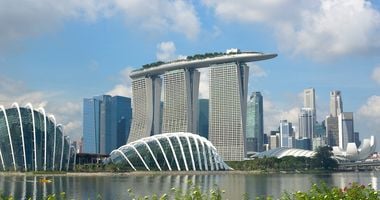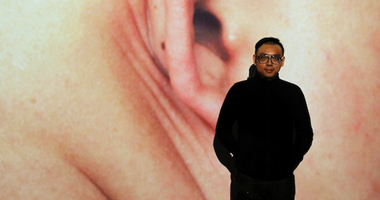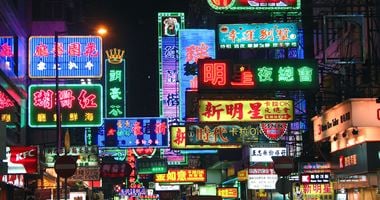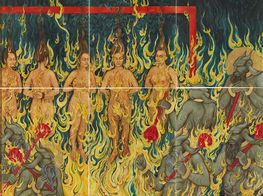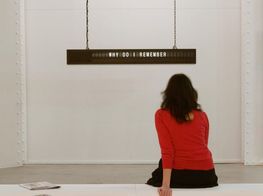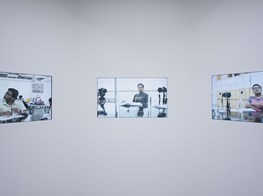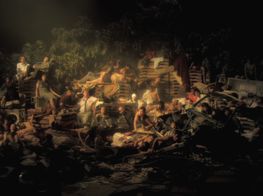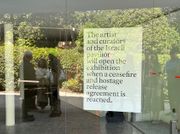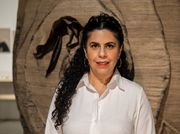June Yap

Launched in April 2012, the Guggenheim UBS MAP Global Art Initiative charts contemporary art in South and Southeast Asia, Latin America, and the Middle East and North Africa.
No Country: Contemporary Art for South and Southeast Asia is the Initiative's inaugural exhibition. Initially shown in New York, (22 February—22 May 2013), the exhibition will open at the Asia Society in Hong Kong in October (30 October 2013—16 February 2014), and then is expected to travel to Singapore.
With a focus on South and Southeast Asia's shifting spectrum of creative practices, the exhibition will feature work by some of the region's most compelling and innovative artists, including Shilpa Gupta, Ho Tzu Nyen, Khadim Ali, and The Propeller Group. In addition to exhibitions, curatorial residencies and educational programs, the project includes purchase of the exhibited works for the Guggenheim's permanent collection.
June Yap is the curator of No Country: Contemporary Art for South and Southeast Asia. Originally based in Singapore, Yap has been an independent curator since 2008, working with artists throughout the region. Most recently she organised an exhibition of the work of Ho Tzu Nyen for the Singapore Pavilion at the 2011 Venice Biennale. In 2010, Yap curated You and I, We've Never Been So Far Apart: Works From Asia for the Center for Contemporary Art in Tel Aviv for the International Video Art Biennial.
Anna Dickie spoke to Yap about No Country: Contemporary Art for South and Southeast Asia, the challenges of selecting works for this exhibition, and her hopes for the legacy and impact of the exhibition.
There is the other more literal level of 'no country' referring to borderlessness, to suggest alternative relationships within the region, relationships that we either have forgotten or that may inspire our future interactions.
ADThe exhibition draws upon the opening line in W.B Yeat's poem Sailing to Byzantium (1928), which was later adopted by Cormac McCarthy for his novel No Country for Old Men (2005); and which underwent a further resurrection in the Coen brother's 2007 Hollywood film. How does it reflect on the works selected for this exhibition?
JYThe title works on a couple of levels. There is the intertextual reference, which is the metamorphosis of the familiar themes of existence, impermanence, morality, human pursuits, truth and fate, across the media of poem, novel and filmic adaptation, which I compare with cultural and historical influence within the region, that historically are not delineated by the countries as we know them today.
There is the other more literal level of 'no country' referring to borderlessness, to suggest alternative relationships within the region, relationships that we either have forgotten or that may inspire our future interactions. And finally of course the nation-state itself as the overarching global and economic framing of peoples which defines a particular worldview that I think is not inevitable.
How do you see the exhibition as exploring the notion of 'country'?
Curatorially, for me, there always exists the question of how an exhibition might be productive at a discursive level. And in this case to demonstrate the tensions of representation, challenging and incorporating very real contradictions in the activity of portrayal and presentation that is unavoidable, and this is somewhat made visible here.
There are quite a few works in the exhibition that deal with the subject of nation, of country as homeland, country as identity, and country as historical encumbrance. These works prompt questions of how we might understand the contexts the artists are speaking from, how we take on certain depictions as inherent, and how with this we might reflect upon our own understanding of the spaces, identities and relations that we ourselves occupy.
ADFrom a curatorial perspective, what were the first steps you undertook to breakdown the enormity of tackling 'South and Southeast Asia'?
JYWell, I've been working within the region for a while, so it was not too daunting, though naturally there would be many approaches possible.
It was a matter of understanding also the nature of the project, the museum, the exhibition, the audiences, and of course the artists and artworks that could become part of this—and then somewhere in there, there is a convergence of direction and purpose that make up the exhibition.
There are quite a few works in the exhibition that deal with the subject of nation, of country as homeland, country as identity, and country as historical encumbrance.
ADTell me about the process of selecting the works for the exhibition.
JYI was traveling for three months around the region, meeting and conversing with artists, curators, galleries, et cetera, to have a clearer picture of what was possible. Then there were the conversations within the project itself to determine what and how the exhibition might shape itself to be.
ADHow did you deal with the practical logistics of researching and exploring artwork across such a vast region?
JYThe region may be large but it is also very interesting, and in a way dealing with it is less about logistics alone, even if is a practical aspect that one can't escape from. However, its the artworks and the artists, and what one can discover, remarkable insights and dialogues, that make it worthwhile.
The art and expressions are wonderful, they are the reason and driving force behind all exhibitions, and it is a boon that there is so much that the region offers, rather than the problem.
ADThe title is interesting in that it is Contemporary art 'for' South and Southeast Asia not Contemporary Art 'of' South and Southeast Asia. Was this a conscious choice? Why?
JYIt's a fairly simple but deliberate turn of phrase that expresses the nature of a relation. In this case, I was interested not simply in a preposition that connected the two elements, of art and the region, but one that challenged the exhibitionary tendency to merely represent, to push it further to one demonstrating engagement and commitment, a reciprocity even perhaps.
'For' implies an extension of oneself, a reflection upon one's position, and an act of giving rather than taking, a consciousness of the relation itself.
ADTo what extent do you think an exhibition of this type is vital for a region that lacks the institutional structures that are typical in Europe or America?
JYLack is subjective in some ways. There may not be the institutional structures of museums, schools, markets or even organisations that are assumed to define art as professional activity in the region as much as one might observe in Europe or America. But that is overlooking the communities, the artist spaces, the sharing of knowledge and expressions that the region richly has, and always had. That said, an exhibition of this type certainly turns economic and global attention towards the region.
The artworks powerfully concentrate histories, ideas and aesthetics in a single expression, but a statement, a dialogue can too have as much as an impact.
ADThe Guggenheim is presenting an extensive series of discussions and commentaries, accessible both at participating venues in South and Southeast Asia and New York City, and online on the Initiative's website. To what extent do you see the objects in the exhibition as being as important, or even less important than these discussions and the dialogues that will ensue?
JYBeing involved in both, the online dialogues and contributions are as important to me as the artworks. It's about what one learns and what opens one to new ideas and thus better understanding of another. The artworks powerfully concentrate histories, ideas and aesthetics in a single expression, but a statement, a dialogue can too have as much as an impact.
The exhibition recently closed in New York and will reopen in Hong Kong. How different will the exhibition in Hong Kong be compared to that in New York?
It is a different space and a different audience. I think it is interesting to bring these works, as well as the project, back to the region. It raises different questions beyond mere representation or introduction, to issues that I think are important for us from within the region. In some ways the word 'for' in the title suggests this too.
ADWhat would you like the legacy of this exhibition to be?
JYLegacy is something beyond one's control really... Perhaps the legacy is another exhibition? It sounds rather basic but the reality is that there was obviously a limit to what could be included in a single project such as this, but I hope that in a way it has and would continue to have significant effect for the artists who have been involved, and there being so much else to do, so many other wonderful artists I know, that I'd like to continue doing this, for this exhibition to lead to more such possibilities for all of us. —[O]


